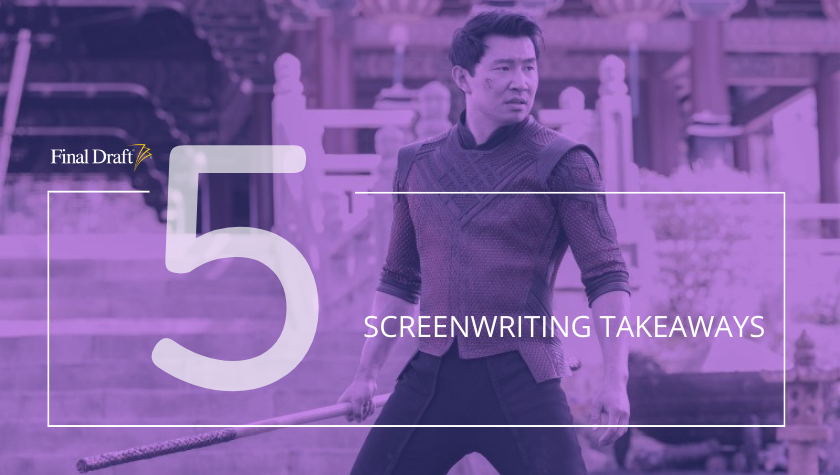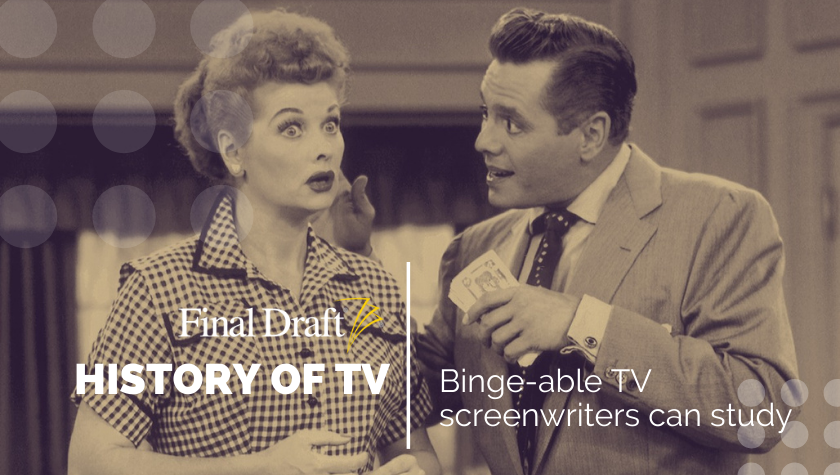5 Screenwriting Takeaways: Sorkin’s ‘Being the Ricardos’ focuses on Lucille Ball’s most stressful week
December 17, 2021
I Love Lucy and its follow-up The Lucy-Desi Comedy Hour were such landmark programs that despite the final episode airing over 60 years ago, and the likelihood that the majority of Americans have probably never watched an episode, there are memorable moments that stick in people’s minds. For example, the grape smashing scene is iconic, but does anyone know what the episode was actually about?
Its star, Lucille Ball, was a legend who had to contend with a lot in her personal and professional life. In Being the Ricardos, Oscar®-winner Aaron Sorkin focuses on one week in 1952 when Lucy and her husband Desi face insurmountable internal and external conflict. The film starts off with the audience learning that Lucille was outed as a Communist at the end of a radio commentary program. Then, a newspaper suggests Desi has been fooling around behind Lucy’s back. If that’s not enough, Lucy is pregnant. And if that's still not enough, there is constant infighting between the cast members and, according to Lucy, an incompetent director staging the week’s show. All the while, that Communism thing may very well destroy her career and make this week the final week Lucy and Desi work.
Your week may not look so bad now.
Being the Ricardos stars Nicole Kidman, Javier Bardem, Alia Shawkat, J.K. Simmons, Nina Arianda, and Tony Hale, and was written and directed by Aaron Sorkin.
Here are your five screenwriting takeaways from Being the Ricardos.
1. Who is Lucille Ball?
The movie is not exactly a biopic about the life of Lucille Ball, but it is critical to learn about who she was and what drove her thoughts and decisions. What Sorkin does is show right off the bat that she is in charge and that people around her walk on eggshells to ensure they don’t upset her. In one of the first scenes of the film, the cast meets for a read-through of the week’s script and she takes command of the meeting questioning dialogue, action and other decisions made by the writers, Madelyn (Shawkat) and Bob (Jake Lacy), and executive producer Jess Oppenheimer (Hale). Most oblige her suggestions and authority — as they should, she has proven to be a genius when it comes to comedic timing.
As the film continues, flashbacks show how Lucy and Desi met and how their careers in show business took shape. With each look into their past, the audience sees how Desi championed her career and how she consistently proved her worth leading to a TV show watched by 60 million people every week.
Writers can see how to construct a look into a lead character’s life in the context of a larger story, and why flashbacks were the best way to reveal who Lucy was.
2. Piling on the problems
To combat the stress of being labeled a Communist by a major newspaper at a time when fellow entertainment industry professionals were being blacklisted is enough to make anyone have a bad week. But that’s not all that gets thrown onto Lucille Ball’s plate.
While this film is based on a true story, writers can see how important it is regardless of the story they’re telling to keep upping the stakes and piling on the problems. Writers will often pull back on causing their lead characters misery for a variety of reasons. Maybe they don’t want their character to suffer too much pain, or perhaps they think a lot of problems is “unrealistic” or too dramatic.
But these are some of the problems Lucille must face and conquer in just five days of her life:
- A troubled marriage, which includes her husband staying out with more frequency and potentially being unfaithful.
- Learning she’s pregnant and figuring out a way to have it be part of the show.
- Being labeled a Communist and the potential that this will be the last week of her show — and her career.
- Dealing with fights between cast members on set.
- Having friendships possibly fall apart.
It's one obstacle after another and the audience becomes invested in the journey, wondering which ones she will solve, and which ones will cause damage.
3. Why Communism?
Hollywood likes to make movies about Hollywood. One fraught time in its history is when the House on UnAmerican Activities Committee, whose job was to investigate disloyalty, focused on the threat of Communism in the late 1940s and 1950s. During this time, several entertainment industry professionals were accused of being Communists and therefore blacklisted. Simply being labeled ended careers.
Imagine years down the road, being unable to work due to your current political affiliation.
Because of the perceived threats of rising Communism, this era was known as the Second Red Scare and did end several careers. What makes this time period so relevant when telling a story is how easy it is to compare with modern-day’s societal and political issues through a comparison to 70 years ago.
The Red Scare is nothing new in film. These recent films have used it as a plot device:
- Trumbo (2015)
- Good Night, and Good Luck (2005)
- Cradle Will Rock (1999)
- The Majestic (2001)
- Hail, Caesar (2016)
4. Every character is an individual
Sometimes it’s easy to create a somewhat generic character because you need someone to fill the part in the scene. Being the Ricardos does not do that. Each character, even the most minor ones, has thought put into them.
Lucy and Desi are the main characters and they are well-defined. William Frawley (Simmons) and Vivian Vance (Arianda), who play Fred and Ethel Mertz on the sitcom, have plenty of dimension; so much so that viewers would love to see biopics on their lives. And then there are the writers Madelyn and Bob, and executive producer Jess, who all come to life as their own characters whose lines are individual unto themselves.
Writers can see how Sorkin made each of his characters important to the story and the scenes in which they appear. It’s not to say writers should create full bio pages for every single character in their script, but it means that they should flesh out their characters and ensure they have their own personalities just like anyone else in real life would.
5. Structuring the truth
Sorkin uses an intriguing device to tell this story. The film starts off with what appears to be documentary footage of modern-day Jess Oppenheimer, Bob Carroll, and Madelyn Pugh setting up the story with differing points of view.
It’s an interesting trick that adds legitimacy to the story at points throughout the film. But was it true? These characters providing this “documentary”-style input are actors. While something like this should be used sparingly, it has proven to be effective. The most popular version of this was in When Harry Met Sally in which the audience was shown couples talking about love as if they were being interviewed. This too, was fabricated, yet elevated the film's structure.
Being the Ricardos is currently in theaters and will be available on Amazon Prime on December 21st.
Written by: Steven Hartman
Steven Hartman is an award-winning, optioned screenwriter. He was a Top 5 Finalist in Big Break’s Historical Category in 2019 and won Best Action/Adventure in Script Summit’s Screenplay Competition in 2021. He holds a Bachelor of Arts degree from Columbia College and had internships at Jerry Bruckheimer Films and Village Roadshow Pictures. Steve is a full-time writer and creative video producer by day and a screenwriter and novelist by night.



